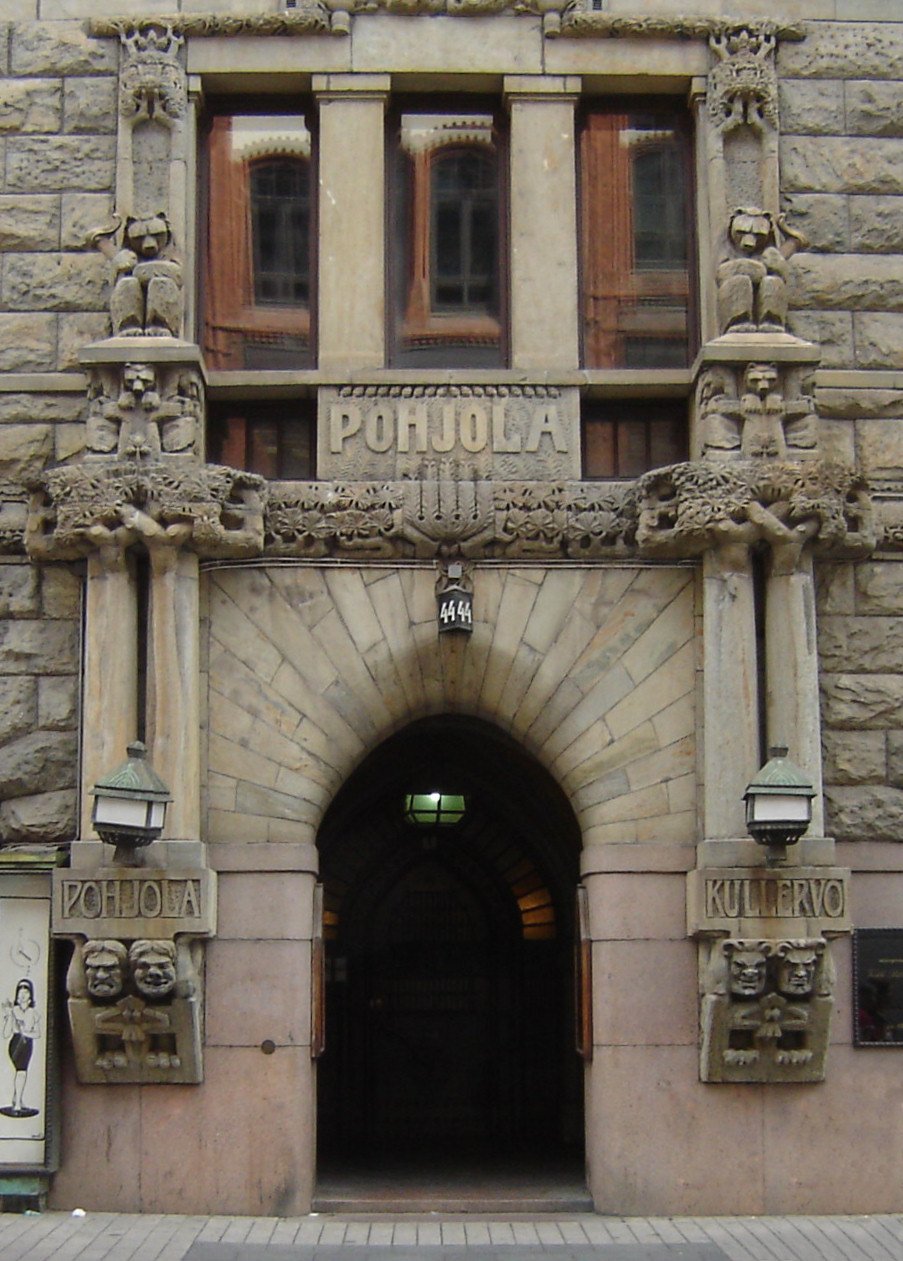
The 1901 Pohjola building in Helsinki, Finland is decorated with many grotesques representing figures from Finland’s mythology. The word “Pohjola” itself refers to a place in the myth Kalevala,which is Finland’s national epic, and the people and animals on the building are presumably from that epic. Pohjola may also refer to the name of the insurance company that once inhabited the building. The Pohjola building was designed in the turn-of-the-century National Romantic style, which was a popular Scandinavian relative of Art Nouveau, by Eero Saarinen and others. You can see photographs of the building’s individual grotesques here. It includes so many different creatures, all carved in a charming, folksy style.
